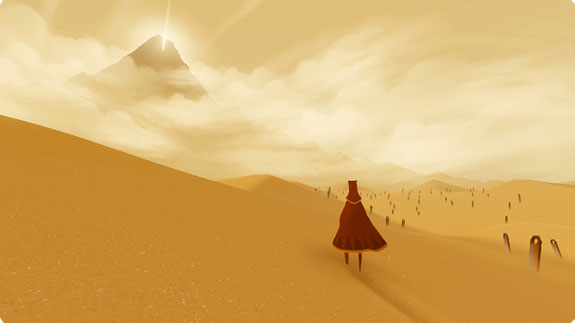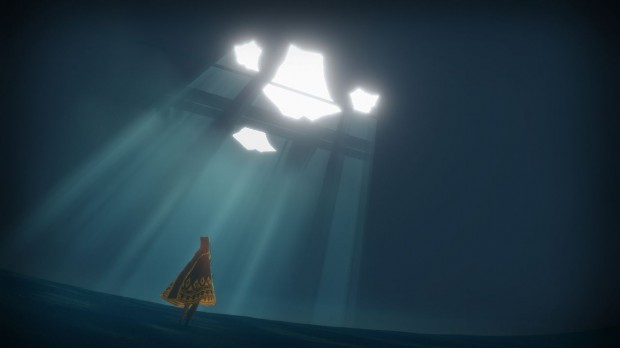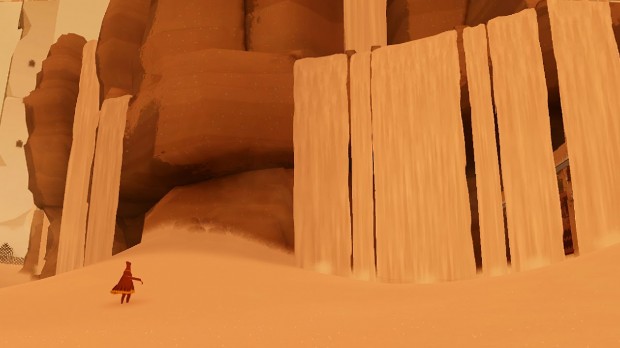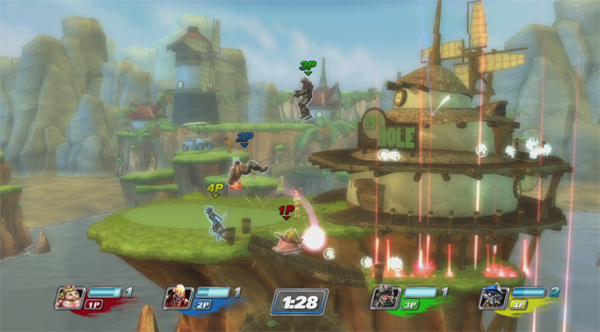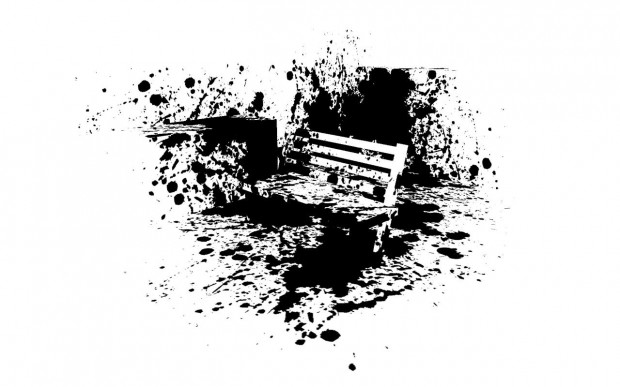I’ve spent a lot of time in 2012 playing games, but not a lot of time writing about them. As I did last year, I’d like to tell some stories or share some thoughts about the ones that meant the most to me this year. I’ll be posting one a day until Christmas. See all Games of 2012 posts.
I was born in 1980. It wasn’t too long after my birth before I could be found playing video games.
I have lived through the Atari age, the Nintendo hey-day, and the 16-bit wars. I have watched the popularity of arcades rise and fall in long cycles. As a song famously states, I was there.
As happy as I am to gripe about the state of the industry, there are positive threads that run counter to the negative ones. And one of the best success stories of those threads is thatgamecompany’s Journey.
Journey is a beautiful but simple game. It resembles a 3D platformer, with a very limited control scheme – I believe there may be two buttons to use. Your goal is to travel to the light you see coming off the mountain in the distance. You may travel alone, or you may happen onto a companion – played by a randomly matched player on the network, who you can’t really communicate with.
When I consider Journey’s existence, this is what strikes me:
Journey came from a relatively small studio, one that started making games for USC game innovation lab research projects.
Journey was initially released digitally only, avoiding the cost and risk that comes with trying to get a title onto a readily shrinking number of retail shelves. (A retail version did come later, but it was a bundle of three games.)
Journey has a friction-free network function – companions drift in and out of the game, without server browsing or firewall reconfiguring or friends requests. It’s less a game with multiplayer and more a game that just involves other people.
Journey has a strange, ambiguous storyline that’s open to interpretation. I’ve read people argue it’s about life, or death, or rebirth, or companionship, or religion, or God. (I have my own opinions but I don’t wish to argue them tonight.)
Could a game like Journey exist at any other point in the gaming industry’s lifespan than right now? It feels like it could not, like the pitch would’ve been shot down and laughed out of the room by business executives. It needed to wait until the industry changed as much as it has in recent years.
For all the negativity I have about the gaming industry, I have to recognize that titles are emerging unlike anything we’ve seen before. I can only hope the industry keeps evolving, because the world needs more experiences like Journey.
(There are five games left in my Games of 2012 quiver, and all of them (save tomorrow’s game) share a similar pedigree: I can’t imagine them existing in any year other than now.)
Journey is available for the Playstation 3.
